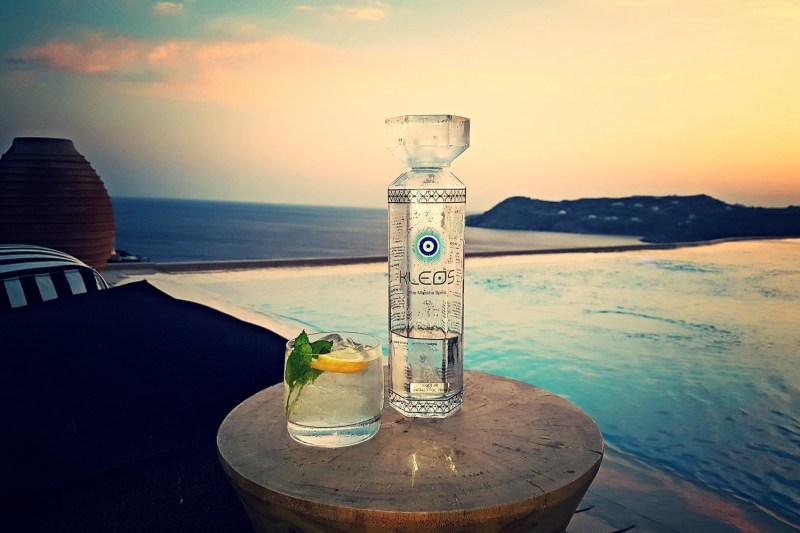
Fame and glory are irresistible to most people — they are the ways that we as humans can leave legacies. For some, that’s winning Olympic gold. For others, it’s becoming a doctor and having a wing named after them. Then, for the likes of us, it’s becoming the creator of the first spirit brand in a particular category. That’s where Effie Panagopolous and her product Kleos come in.
“Kleos” is the ancient Greek word for “fame or glory attained through good deeds and hard work.” In Greek myths, the heroes and heroines performed act after act in order to earn their kleos. Now, in 2018, it’s also the name for the Greek first luxury spirit brand.
Mastiha can only be found in one place in the world: Greece’s fifth-largest island, Chios.
The spirit Kleos is made from mastiha, a resin that is secreted by the mastiha (or skinos) tree, which can only be found in one place in the world: Greece’s fifth-largest island, Chios.
If that wasn’t specific enough, the mastiha trees only grow on the southern part of the island, in the area of 24 villages, which are known as mastiha-horia, or mastiha-producing villages. Since 1997, the area has been a Protected Designation of Origin (PDO) by the European Union.
Mastiha itself has been used for millennia, with the first reference being all the way back in 450 BCE. The famed Greek Philosopher Herodotus wrote about it and Hippocrates (the father of Greek medicine) prescribed it for its healing properties. The sap, after it is secreted from the trunk of the tree, falls to the ground as dakrya or “tears.” These tears are then collected, cleaned, and used for a variety of items, from the ancient chewing gum to why you’re here reading this article: booze.

Panagopolous, a former brand ambassador and spirit consultant, first had mastiha as a child in dessert form, a mix of ground mastiha and glucose.
“It looked like [marshmallow] fluff and you were given it with a glass of water. Then you swirled the mastiha mixture swirled in water and suck on it like a lollipop,” she said.
It wasn’t until the late 2000s, though, that she had mastiha in liquor form. While in Mykonos working with Metaxa, someone handed her a shot. She knew at that moment that she needed to bring mastiha to the United States.
Sheatnew in that moment that she needed to bring mastiha to the United States.
So that is exactly what she did. She brought a few bottles of a Greek brand, Skynos, back and taste-tested it with industry professionals. It was a hit, and Panagopolous realized that she needed to develop her own brand of mastiha liquor. So she did.
After working on almost 20 different formulas (and in the process gaining and losing funding as economies soared and crashed), Panagopolous landed on what would become Kleos. The reason for the winning recipe was simple.
“I had a goal to make a mastiha that was balanced enough to be consumed neat or on the rocks with a wedge of lemon and robust enough to stand out in cocktails,” she said.

At 30 percent alcohol by volume, it is subtle yet strong. When she was doing initial taste tests, Panagopolous said, people most often noted cucumbers, gin, sweet tea, and (perhaps surprisingly) carrots.
Overall, Kleos has an herbaceous and vegetal character with mineral and earthy notes. A slight sweetness rounds out the finish. According to Panagopolous, one drinker said it is like “drinking a spa.”
(That may even be better than eating this short rib youvetsi, but we’ll have to try it a few times — for research, of course — in order to come to firm decision on that one.)
In terms of consuming Kleos, you can do it neat or with a rock and a slice of lemon or in a cocktail. The signature cocktail for Kleos is the Kleo-Patra. The drink is made with Kleos, muddled basil, and lemon and takes its name from the fame Egyptian ruler, whose name means “Glory of the homeland.”
The Kleo-Patra

Adopted from the modern classic cocktail “The Med,” created by the demigod credited with Greece’s cocktail renaissance , Michael Menegos. Like Plato and Socrates, you can find him in Athens’ best watering holes waxing poetic on government, philosophy, food, and drink.
- 2 parts Kleos Mastiha Spirit
- 1/2 part fresh lemon juice
- 1/4 part simple syrup
- 4 basil leaves
Method: Shake all ingredients vigorously. Strain over fresh crushed ice in a highball. Garnish with a lemon wheel and basil leaf.
While Kleos isn’t nationally distributed yet, you can find it in some states. To see where you can buy Kleos online or in stores, click here.



